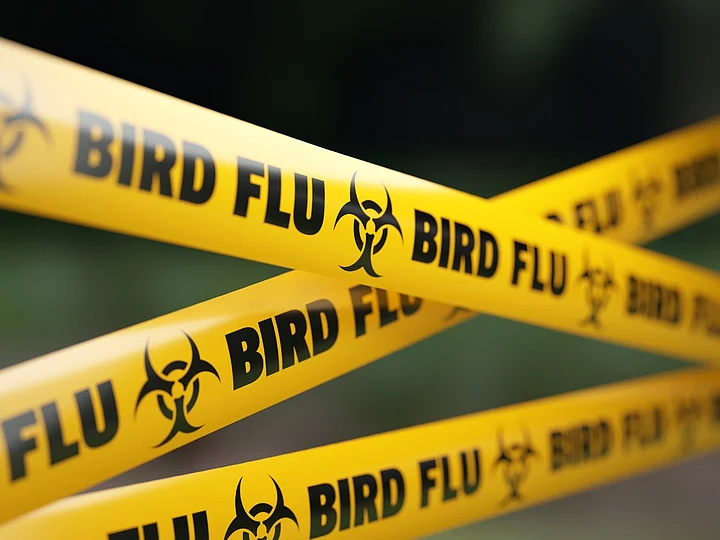Bird flu, also known as avian flu is a type of infection that affects birds, commonly the bird flu viruses do not affect humans but there are some strains — particularly H5N1 and H7N9 — that can spread to humans in rare cases and cause serious illnesses.
Bird flu is transmitted to humans when these viruses of the group called avian influenza travel from the saliva, mucus, or droppings of an infected bird into a person’s eyes, nose, or mouth. Humans can get infected by these viruses even by breathing in the virus since the virus can survive in air droplets, dust, or a surface that’s harboring the virus and transferring it to the eyes, nose, or mouth.
Let's have a look at the symptoms, causes, diagnosis, and treatment of bird flu.
Bird Flu: Signs and Symptoms
According to Healthline, the symptoms of bird flu typically begin within two to five days after catching the virus and they are similar to the seasonal flu. It can cause mild to severe symptoms like:
Conjunctivitis
Fever greater than 100.4 degrees F (38 degrees C)
Cough
Sore throat
Difficulty breathing
Fatigue
Nausea and vomiting
Muscle aches
Abdominal pain
Bleeding from the nose or gums
Bird Flu: Causes
Bird flu is spread through contact with both wild birds and domestic poultry, such as chickens, turkeys, and ducks. Bird flu infections are rare and most of them occur in people who’ve had unprotected contact with an infected bird or a contaminated surface. There have been some instances when a person got infected without making direct contact with a bird.
The virus spreads from person to person rarely but this type of transmission has been limited and does not happen easily. Open-air markets are a common source of bird flu since eggs are sold in unsanitary conditions.
A few cases of H5N1 in humans have come forward but it only happens when they eat food made with raw, contaminated poultry blood. Though there’s no evidence that people have been infected with bird flu from eating properly cooked poultry. People who eat undercooked poultry are at a higher risk of suffering with infections other than influenza, including salmonella.
Bird Flu: Diagnosis & Treatment
Bird flu can’t be diagnosed based on symptoms. A healthcare professional will take a swab from a person’s nose or throat and use a molecular test to detect the virus.
The test shows an accurate result when the sample is taken within the first few days of a person’s illness. It becomes hard to detect the virus in someone who is no longer very ill or has fully recovered. The average incubation period of bird flu H5N1 is two to five days and it can last up to 17 days. The average incubation period for H7N9 is five days and it can last up to 10 days. Both viruses have a longer incubation time than seasonal influenza.
According to World Health Organization, people with bird flu are treated with antiviral medications for at least five days but a patient can continue to take them until their symptoms reduce.

